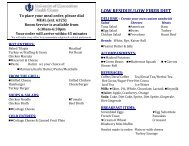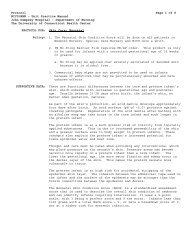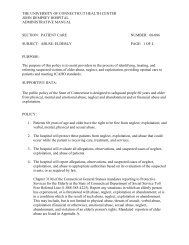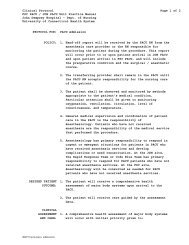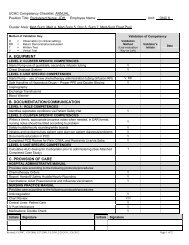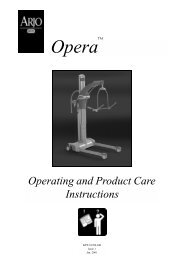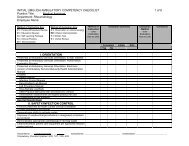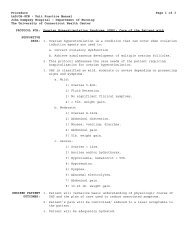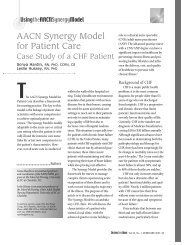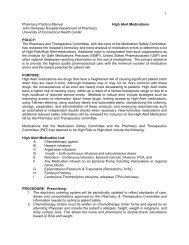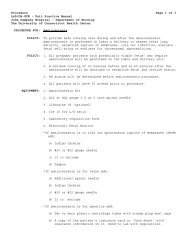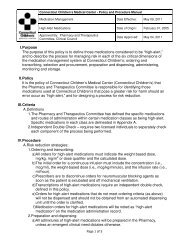Pediatric Critical Care Nursing: Annie's Story
Pediatric Critical Care Nursing: Annie's Story
Pediatric Critical Care Nursing: Annie's Story
You also want an ePaper? Increase the reach of your titles
YUMPU automatically turns print PDFs into web optimized ePapers that Google loves.
describing. Then I described what a nurse did or said and she would guess the person. Welaughed - most importantly, she laughed.She had her tumor debulked a short time before she died. Fortunately, she regained her sight.She made the most of her last days. She wanted us to sing to her and then she recorded herselfsinging and played it for everyone. One of her favorite recordings was played at her funeral. Shealso loved to eat tuna fish sandwiches and potato chips at 1:30 AM - we always made sure shehad her favorite snack then.During her last few days, she constantly wanted her nurse with her. Even though she did notrequire 1:1 care, with our manager's approval, we made her a 1:1 assignment. Nurses workedextra shifts so that the nurse caring for Annie did not have to take any other patients. I was ableto hold her for 4 hours on the day before she died. After she died, all of the staff were comfortedby knowing that we were able to "orchestrate" her death, supporting both Annie and her parentsthrough this difficult time.Patient CharacteristicsThe Synergy Model describes patient characteristics, which are unique to every patient and caresituation. Annie was minimally stable because she could not maintain a steady-state equilibriumas she continued to deteriorate. She was complex because her emotional needs were very highand her family often could not be there to support her. She relied upon the nurses to support andcomfort her. She was extremely vulnerable because of the psychological stressors; the adverseoutcome for her could be a lonely and painful death. She was minimally resilient because herrestorative capacity was no longer functioning. She did not have many resources available to her;however, she participated somewhat in her care by identifying her needs to the nursing staff. Hertrajectory of illness was predictable; getting better was no longer an option for her.Nurse Characteristics<strong>Nursing</strong> competencies also span a continuum that is based on patient's needs. The SynergyModel describes 8 competencies that are essential for contemporary nursing practice. Eventhough all 8 competencies are critical, each competency assumes a higher or lower degree ofpriority for each patient, depending on the patient's characteristics.(1) The competencies thatwere of highest priority for Annie were caring practices, advocacy/moral agency, and systemsthinking.Caring practices are a constellation of nursing activities that are responsive to the uniqueness ofthe patient and the patient's family and create a compassionate and therapeutic environment withthe aim of promoting comfort and preventing suffering. Caring behaviors include, but are notlimited to, vigilance, engagement, and responsiveness.(1) The nurses were extremely responsiveto <strong>Annie's</strong> unique and changing needs. Our care created a compassionate environment, whichensured her safety while providing her comfort. Vigilance was required in this situation, especiallyduring the period when Annie could not see. Our actions prevented suffering brought on byloneliness, pain, and fear.Advocacy and moral agency is defined as working on another's behalf and representing theconcerns of the patient, the patient's family, and the community. Moral agency requires "knowing



